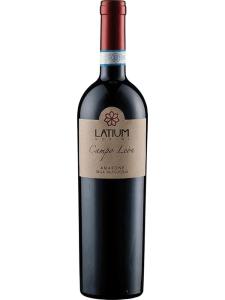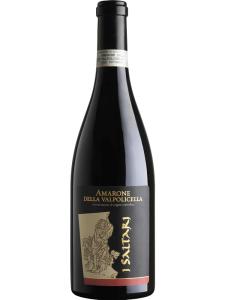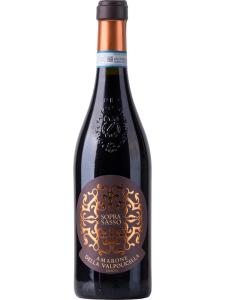Amarone della Valpolicella is an intensely flavored dry red wine made from dried (passito) grapes. It is made in the Veneto region of northeastern Italy, and is arguably the region's most prestigious red wine.
The amarone style developed as Veneto's winemakers searched for a way to increase the body, complexity and alcohol content of their wines. As demonstrated by modern-day reds Valpolicella and Garda, wines made from locally grown Corvina, Rondinella and Molinara can sometimes be too light to give satisfaction. These three mainstays of the Valpolicella vineyard are not renowned for their inherent depth (only Corvina is able to produce wines with much body), a deficiency compounded by the cool growing conditions of western Veneto. In order to concentrate the natural sugars and aromatics in Valpolicella wines, local producers began drying their grapes after harvest, to remove water from the berries while retaining sweetness and flavor. (© Copyright Material, Wine-Searcher)
This technique proved very successful, although initially it was used to produce sweeter styles of wine, such as those now known as Recioto della Valpolicella. The early amarone wines were seen as mistakes – recioto left to ferment for too long – but eventually the style gained recognition and respect. Amarone comes from the Italian word amaro ("bitter"), completed by the -one suffix which denotes impressive size or volume. When compared to the sweet recioto which the early amarones were supposed to be, this name is entirely logical.
The grapes used to make modern amarone wines are of the local Corvina variety and its sub-variety Corvinone. They are picked in whole bunches and kept in drying rooms (with warm temperatures and low humidity) where they stay for anywhere from three weeks to three months. Traditionally the grapes were dried on straw mats (they are a member of the "straw wine" family) in the warmest part of the house or winery, but modern technology has replaced straw with steel and lofts with pallets. When the drying process (known as appassimento in Italian) is complete, the grapes are gently pressed and the must is fermented to dry. The grapes' high sugar content means a higher potential alcohol, so a complete fermentation results in a strong wine of 15 or 16 percent alcohol by volume. This is then aged in barrels (traditional large botti are now being replaced by smaller Slavonian oak barriques) for at least two years before commercial release.
Standard Amarone della Valpolicella can be made from anywhere within the wider Valpolicella zone, but those from the viticulturally superior classico and Valpantena sub-zones may be labeled as such.
The amarone production process creates a vinous byproduct, of sorts. Rather than discard the dried grape skins (or use them for distillation into grappa), resourceful winemakers use them to add depth and complexity to their standard Valpolicella wines. The wine and grape skins go through a second fermentation together, during which tannins and phenolic compounds are leached out into the wine, creating Valpolicella Ripasso.





